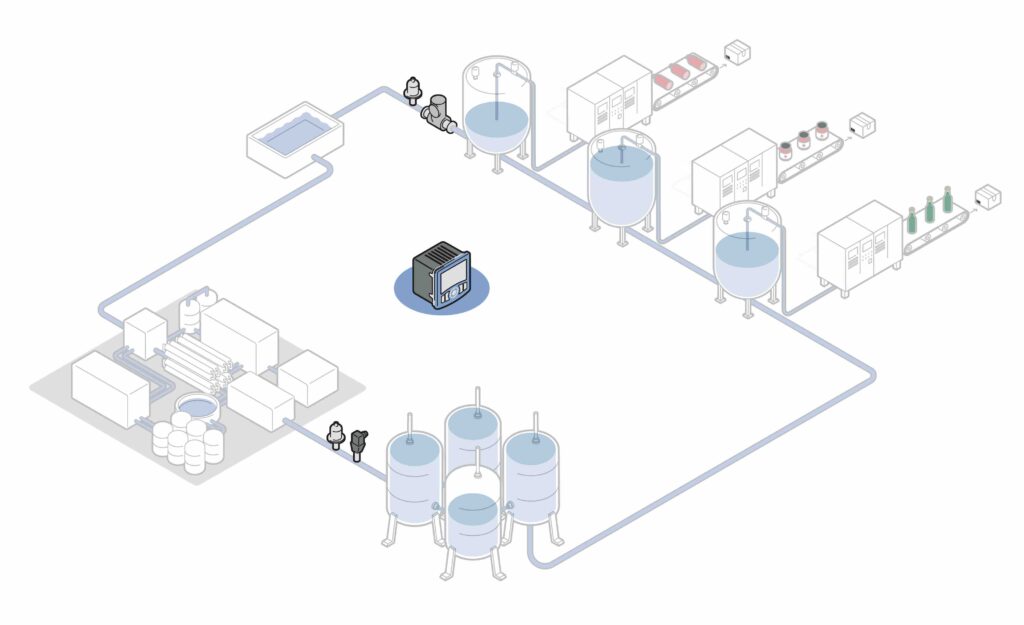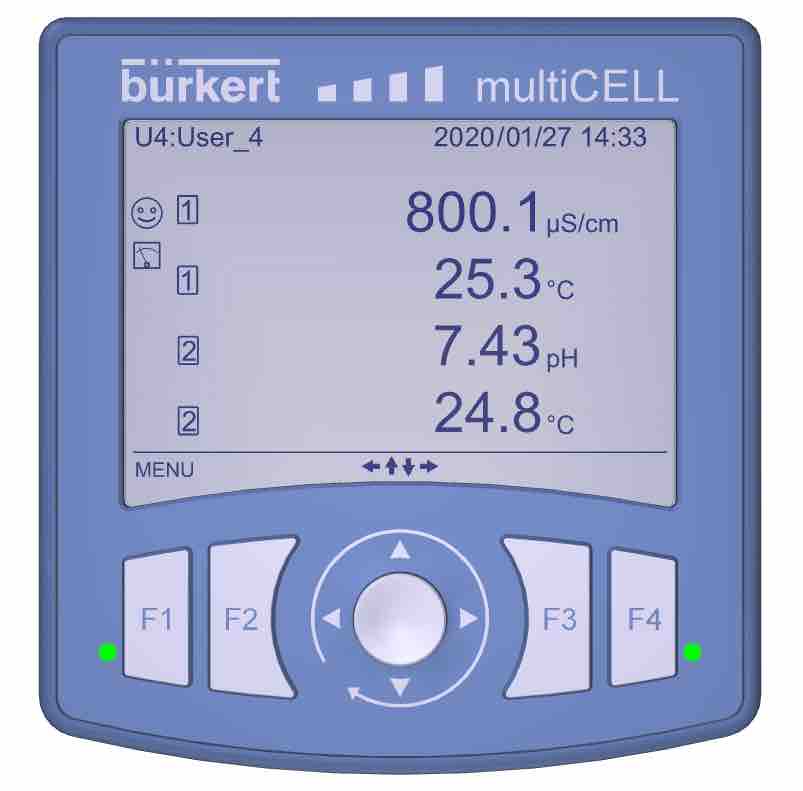Christof Kundel looks at the importance of monitoring water quality in production loops and how this can be achieved cost-effectively
Throughout food and beverage manufacturing pure water is required for many processes and end products.
Both OEMs of production skids and end users appreciate the importance of maintaining the water quality standards in the production loop.
Using a proven and flexible monitoring system to collect sensor data, calculate differentials and communicate with a PLC can reduce the time for the initial build as well as installation costs and increase the speed of operation.
Purified water is used in numerous processes in food & beverage manufacturing for products such as soft drinks and beer, to compensate for variations in water quality to ensure the same consistent taste. It is created using methods such as nano-filtration (NF) or reverse osmosis (RO) to meet the required specifications.
Meeting the challenge
Process water is held in a storage tank that feeds the ring line where tapping points, either manual or automated, deliver the water to the production process.

Unused water continues back to the storage tank. It is essential that all the water quality specifications are upheld throughout this process.
Careful monitoring of water quality is crucial to ensuring process reliability, allowing any variations to be quickly identified and resolved. The parameters being monitored can include pH, conductivity, oxidation reduction potential (ORP) and chlorine content, as well as temperature and flow rate.
Any divergence from the pre-set limit values can require production to be halted while cleaning and disinfection procedures are carried out. The resulting downtime can have a significant impact, especially on high value production lines.
Furthermore, if there is any doubt over the exact timing of the drop in water quality, some product batches may have to be rejected to ensure absolute product quality since the food or beverage taste and flavour is directly linked to the correct water quality.
Increasing speed with automation
Typically, manual processes of monitoring and documentation are not very efficient. Individual sensors with their own displays are installed at various stations in the process.
Readings must be taken from each sensor and the values then entered into the control system. The additional displays make the sensors more costly, both for the initial purchase and if any replacements are required.
Manual processes are also challenged in terms of permanent documentation of water quality parameters, which may be required for quality control procedures. In addition, there are no automatic comparison functions between the sensors, whose values could provide early indications of malfunctions.
Building for the future
Production facilities will often operate multiple production loops, all of which use purified water. Continuous water quality monitoring with local displays enable production personnel to take the necessary action before an alarm point is reached. This ensures a much smoother operation and minimises the number of alarms, which have the potential to halt production until the water quality issue is resolved.

OEMs can build single or multiple skids that can be linked together, enabling communication between them, allowing several water loops or production rooms to be monitored at the same time.
To deliver a comprehensive solution that can improve manufacturing reliability and meet the future needs of the facility, OEMs are able to use a multi-function transmitter that can monitor several parameters at once, calculate any differentials and communicate with the process PLC. In addition, as more industries are embracing Industry 4.0, the controller also supports PROFINET, EtherNet/IP and Modbus TCP protocols.
Reducing downtime
The method of actually building the process skids and incorporating the water quality monitoring system can also be simplified. Bürkert’s Type 8619 multiCELL is a multi-channel transmitter that can be pre-configured to individual specifications.
In addition, its ability to handle six (or even more) sensor inputs such as pH, ORP, conductivity, flow, temperature, as well as level, pressure, turbidity, TOC and many more, means that one transmitter can handle the sensors from at least one process loop.
The on-board mathematical functions (addition, subtraction, division, multiplication) are also giving additional value to many users, where today’s solutions can be very limited. These versatile functions help to define process sequences, detect sources of error at an early stage and make important comparisons in order to optimise processes.
In addition, system issues, such as leakages, are quickly detected, so process reliability is increased through early detection and intervention.
For example, Burkert’s Type 8619 multiCELL can be programmed to give an alarm signal in case of a leak in the ring line. This automated leakage monitoring is made possible by the mathematical and Boolean functions that enable comparisons in parameters.
An alarm status can be quickly viewed by personnel in the field via the clear display. To set up leakage detection in a closed water circuit with tapping points, flow measurement in the supply and return lines is required. With the help of mathematical functions, the flow rates are compared and any unexpected water loss is calculated.
To correctly identify a leak and not a regular withdrawal from the water circuit, the open status of the valves at the tapping points must also be taken into account.
Using a combination of the mathematical functions and the status of the valves, it is possible to achieve reliable and error-free leakage detection.
For the end user, false alarms are eliminated, reducing downtime from plant stoppages to investigate alarm conditions. In addition, verified leaks are quickly detected, minimising any contamination and water damage.
Simplifying installation
When the time comes for installation and commissioning, the multiCELL delivers a number of savings. From the outset, the communications abilities significantly reduce the amount of wiring that is required. Sensors only need to be connected to the local transmitter, which in turn, relays all the information to the PLC.
Once all the sensors are connected, the parameters and calibrations need to be completed. In the past this could be a time-consuming process, but now, assuming all the skids will operate in the same manner, the settings for the first transmitter can be copied to a memory card and transferred to all the other units.
Optimising operations
For the personnel working in the process rooms, both operational and maintenance, it is important to have a clear indication of the actual water quality parameters.
The multiCELL offers intuitive functions and a clear visual display that can be customised for each station, so that the most pertinent information is always available. In addition, it can also be configured as a multipoint data logger with information stored on SD cards.
To help both the OEM and the end users, any industry standard sensor can be used with the transmitter, enabling OEMs to retain any preferences for particular brands, and customers to maintain brand loyalty or simplify parts inventories.
Offering a range of parameter values at a glance and automated calculations, the multiCELL helps to reduce installation and operating costs, as well as optimising maintenance interventions and expense.
Together with industry expertise and advice on sensor selection and positioning, Bürkert offers a comprehensive service that reduces costs and optimises production reliability.
Christof Kundel is Segment Manager Water for Bürkert.
 Engineer News Network The ultimate online news and information resource for today’s engineer
Engineer News Network The ultimate online news and information resource for today’s engineer





